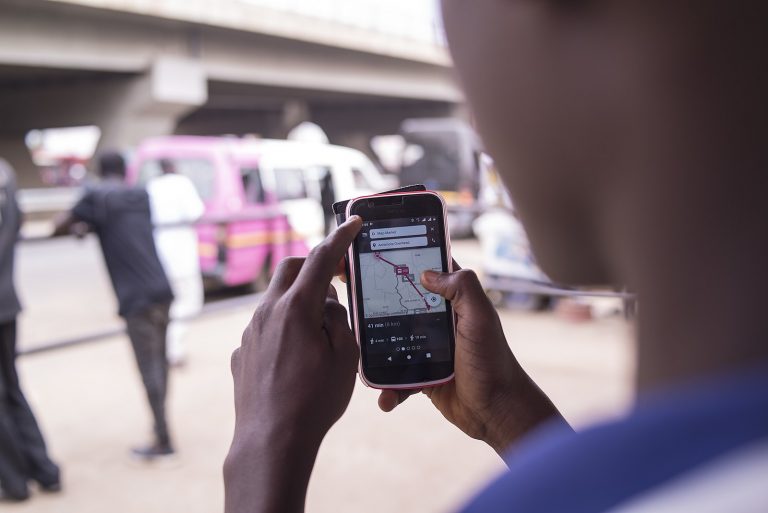Published on November 6, 2020

All over the world, digital literacy and access to technology are commonly divided along gender and racial lines. During a global pandemic that has forced an even stronger reliance on technology than before, the disproportionate and inadequate access that lower-income women of color face is clear, both around the United States and in the Global South. Many women in cities across the Global South rely on the informal marketplace to buy and sell goods, from soap and toilet paper to clothing and fresh fruit. Access to mobile phones and the internet can provide necessary channels for women to access mobile money for their entire family, as well as emotional support as they shoulder more work in the household (World Bank [web], Feb 2020). With strict lockdowns and restrictions in place during the pandemic, these financial avenues and support systems have been slashed. In the Global South, barriers to digital equity are exacerbated by the availability, or lack thereof, of technological infrastructure, financial constraints, and cultural or institutional norms. In a world where women are commonly disenfranchised, “the digital divide could increasingly prevent women from accessing life-enhancing services for education, health, and financial inclusion in a world that has become virtual overnight” (World Bank [web], June 2020). Stronger and more efficient technological infrastructure in cities across the world will allow anyone, but especially women, to connect to much needed social and financial services, especially during the COVID-19 pandemic.

The gender gap represents the difference between the internet user penetration rates for males and females relative to the internet user penetration rate for males, expressed as a percentage.
Across the Global South, women disproportionately lack access to education and health services, bear the brunt of childcare and household upkeep, and often miss out on opportunities to access the internet and other technologies. While almost the entire global population lives within reach of a mobile cellular signal and internet infrastructure is more commonplace in urban areas, women in cities across the Global South often lack access due to key socio-cultural factors: women are encouraged to “develop skills that support domestic responsibilities” and “gaps in literacy levels and knowledge of technology make it difficult for some women to engage” (World Bank Blogs [web], 2020). Deeply entrenched cultural norms prevent women from accessing technology more often than men, even when they live in increasingly connected cities. As of February 2020, over 300 million fewer women access the internet in low- and middle-income countries than men. According to a 2017 AfterAccess survey of 16 countries in the Global South, “the five Latin American countries surveyed [Argentina, Columbia, Peru, Paraguay, and Guatemala], together with South Africa, are the richest among all the countries surveyed and show the lowest gender gap. In contrast, the poorer African countries show high gender disparity in mobile, but particularly in internet, use” (World Economic Forum [web], 2018). Of all the countries surveyed, India, Pakistan, and Bangladesh have the highest gender gaps in mobile phone ownership, adding to South Asia’s unfortunate distinction of holding the world’s widest gender gap. As the Global South becomes increasingly inundated with technology, early adopters are seen to be more educated, high-income users with lower gender disparities in societies that do not constrain the participation of women. However, as prices of devices and internet services come down and poorer people (disproportionately women) come online, the digital divide tends to equalize (World Economic Forum [web], 2018).

Mobile phone shop in Nairobi, Kenya.
The digital divide is not just a problem of “over there”. In the US, underprivileged women, especially refugees, often don’t have the digital literacy or access to technology necessary to succeed in our increasingly digitized world. After arriving in the US, the majority of refugees settle in medium to large cities, where economic opportunity is greater. For new arrivals to the US, digital access, literacy, and social networks can be critical lifelines to help with adjusting to a new environment. According to the Technology & Social Change Group at the University of Washington Information School, a lack of literacy, few programs fostering entrepreneurship, and little coordination among service organizations “primarily affects African Americans, as well as people whose primary language is not English, public housing residents, and the elderly. Women from refugee communities often touch on a multiple of these axes – many are English language learners, and/or living in low-income housing contexts, and belong to ethnic minority groups” (TASCHA [web], 2020). In the city of Seattle, those whose primary language is not English are less likely to have internet access in the home and have fewer types of digital devices. Programs that support entrepreneurial activities, promote digital literacy, and improve technology access for refugee communities are particularly important for women. Closing the digital divide, both in the Global South and in the United States — especially during a time when technology plays such a large role in our daily lives — will enable women to better support their families, provide resources and opportunities for their children, and achieve their own goals in improving their wellbeing.
Originally written by Rebecca Fogel, Urban@UW Communications Assistant.